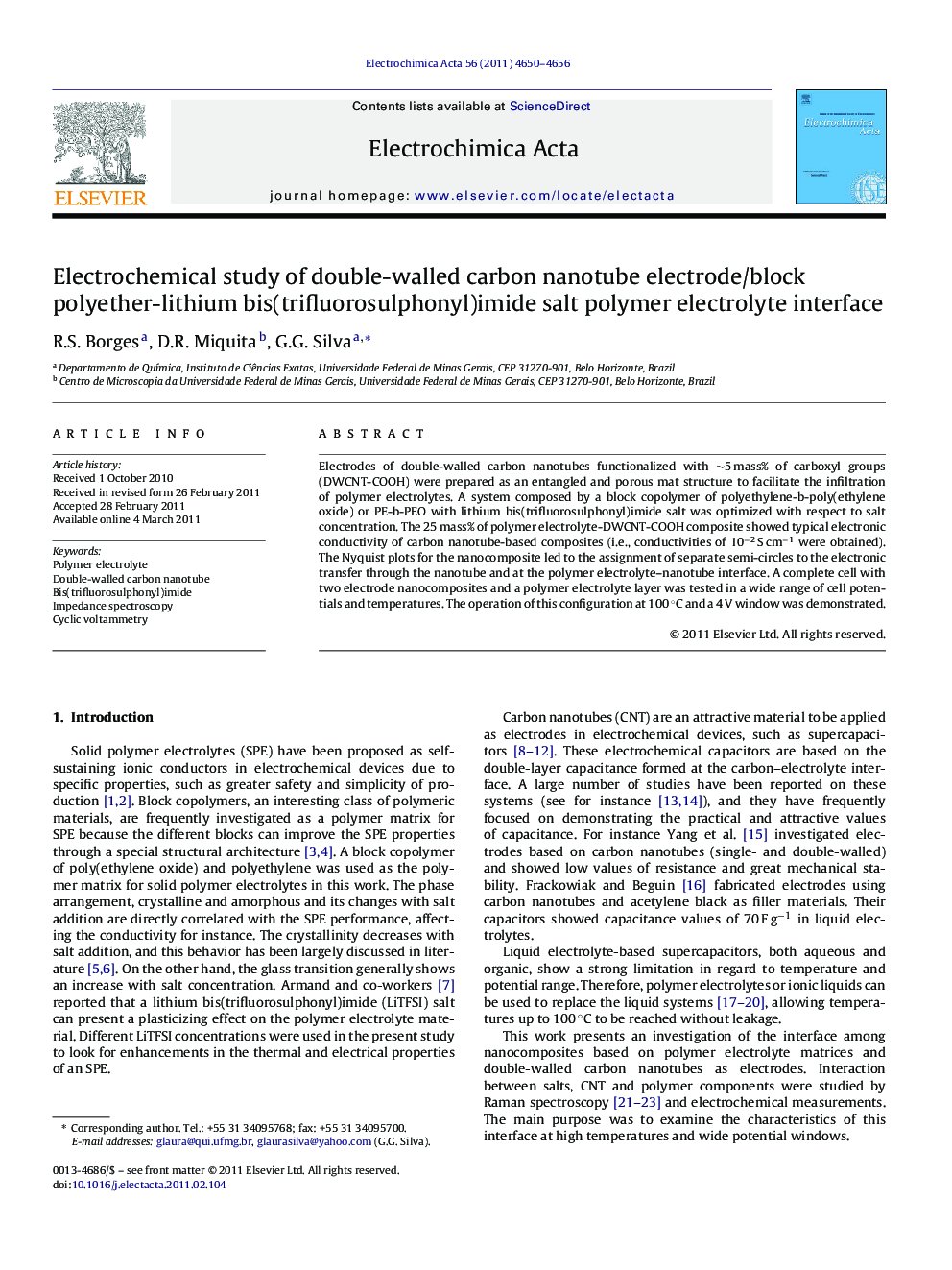| Article ID | Journal | Published Year | Pages | File Type |
|---|---|---|---|---|
| 189887 | Electrochimica Acta | 2011 | 7 Pages |
Electrodes of double-walled carbon nanotubes functionalized with ∼5 mass% of carboxyl groups (DWCNT-COOH) were prepared as an entangled and porous mat structure to facilitate the infiltration of polymer electrolytes. A system composed by a block copolymer of polyethylene-b-poly(ethylene oxide) or PE-b-PEO with lithium bis(trifluorosulphonyl)imide salt was optimized with respect to salt concentration. The 25 mass% of polymer electrolyte-DWCNT-COOH composite showed typical electronic conductivity of carbon nanotube-based composites (i.e., conductivities of 10−2 S cm−1 were obtained). The Nyquist plots for the nanocomposite led to the assignment of separate semi-circles to the electronic transfer through the nanotube and at the polymer electrolyte–nanotube interface. A complete cell with two electrode nanocomposites and a polymer electrolyte layer was tested in a wide range of cell potentials and temperatures. The operation of this configuration at 100 °C and a 4 V window was demonstrated.
► Polymer electrolyte/DWCNT-COOH showed electronic conductivity of 10−2 S cm−1. ► Electronic transfer through the nanotube and at interfaces was characterized. ► A complete cell was tested in a wide range of cell potentials and temperatures.
